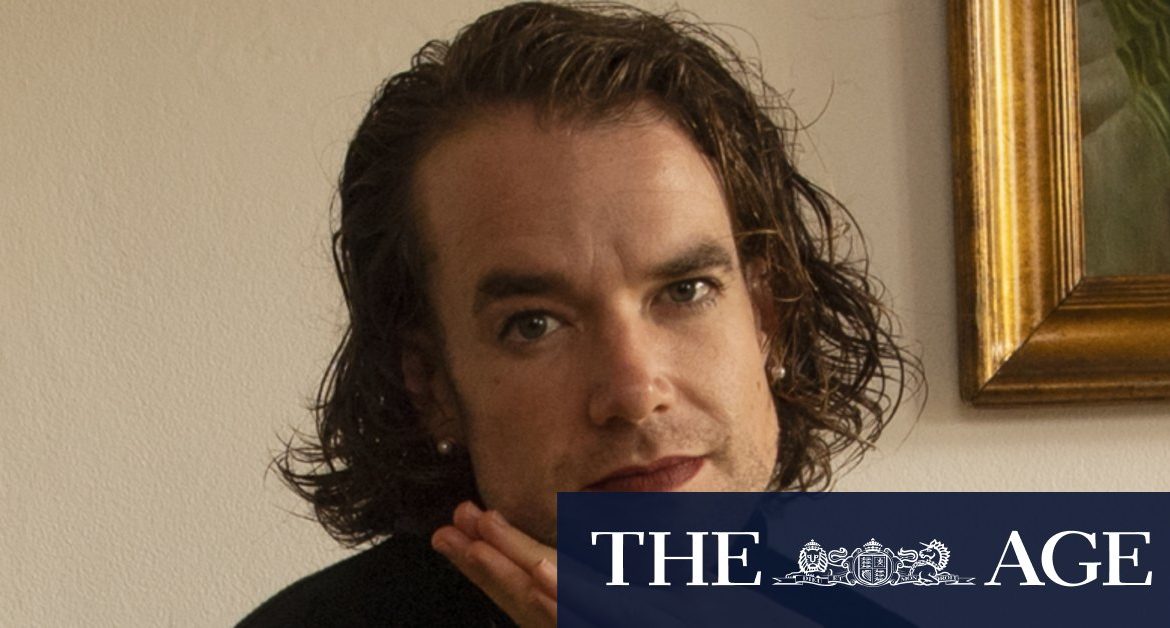Hawkins has co-conceived and written a show, Maureen: Harbinger of Death, in which he immortalises a partly fictional and admittedly exaggerated version of his friend as a “love letter to her”. The show also plays tribute to several other colourful characters with the performer noting that, as a gay man, he has gravitated towards older women all his life.
With her perfect white hair and trademark big round spectacles, red lipstick, black turtleneck and elegant necklace and pearls, Maureen refused to be invisible. Even in her 80s, she rejected the notion that an older woman loses her sense and sensuality.
Even in her 80s, she rejected the notion that an older woman loses her sense and sensuality.
Hawkins once saw a waiter slowly ask Maureen in a patronising tone: “Do you need any help with the menu?”
In response, Maureen feigned feebleness: “Oh, this risotto, they’re not going to put any chilli in it, are they? That might stop my heart!”
Minutes later she swept past the waiter into the kitchen to flirt with the chef, whom she hugged, before returning to the restaurant to declare: “The chef is as lovely as the food he makes. Let’s give him a round of applause.”
Loading
“She couldn’t be controlled,” recalls Hawkins, seated at his Marrickville living room table while preparing for the play’s season at the Sydney Festival.. “Gorgeous.”
In his one-person show, performed in a simplified version of Maureen’s apartment, Hawkins wears a simple skirt that looks like wallpaper with a fleur-de-lis pattern but melts into the wall and floor of the stage set.
The outfit is a metaphor inspired by surrealist artist Leonora Carrington: that your home is an extension of yourself.
“So I’m both in the room and I am [Maureen’s] room, and the audience is in her room but they’re also in her,” says Hawkins.
Loading
Introduced to Hawkins through a mutual female friend who had also worked at David Jones, Maureen was aware Hawkins was planning to write about her,originally as part of a script about several elderly vigilante women who break out of a nursing home.
“The play only kind of made sense when she passed,” says Hawkins.
He is working Maureen’s “very specific top lip” into his characterisation of her. “I’m not trying to make a faithful rendering of her physically; it’s more finding a way to inhabit the relationship we had.”
But why harbinger of death? The kernel of the idea came from Maureen musing on the deaths of peers and the reunions with old friends at funerals.
In the play, the fictionalised “Maureen Daly” goes further, drawing up a list of her friends anticipating the order in which they will die. “Sometimes I’m even there when it happens,” says the stage Maureen. “That’s how accurate I am.”
Hawkins declines to provide Spectrum with a photo of his friend or have her real surname published because the play takes substantial artistic licence and the character is also inspired by other women.
However, he shows me a small picture of Maureen and a link to her obituary of 2018 to prove her existence, adding “it is ultimately a fiction and not a faithful rendering or a biological work”.
“To protect the people who know her but don’t know me, it’s best to detach my work from the real her. I ought to have called [the character] Marilyn or something.”
Growing up in Wyoming on the NSW Central Coast, Hawkins was home-schooled by his mother until year 8. He loved visiting women. There was an old lady called Ethel up the road, and a neighbour called Lynne whose pool Hawkins would swim in without permission.
“I’d go for a swim and she’d come out and pretend to be cranky at me, and then I’d go up and visit Ethel and she’d teach me how to use a loom.”
Another friend, Angela, once told him over lunch why gay men and older women make such good companions: “The world makes you think you’re becoming us.”
Until that point, Hawkins assumed the bond arose from gay men seeing older women as replacement mothers.
Angela thought that notion idiotic: “The world puts the same value on you as it does us,” she corrected him. “If you’re not young and beautiful, if you’re not young and wealthy, you have less meaning.”
Hawkins, who is single, sees a further parallel with older, single women.
“The narrative for you if you’re not in a relationship is that you’re sad and lonely, or your life is somehow lesser. I’m probably not going to have children, I’m not in a relationship and so people go: ‘How are we going to fix that for you?’
“I’m like, ‘Oh, please don’t; I’m very busy and very happy being very busy’.”
The real Maureen would sometimes excuse herself from company by saying she had a gentleman to meet. Hawkins suspects these were imagined lovers and a front for wanting an early night.
In the play, Maureen speaks of younger people at parties being so terrified of the company of an old lady that they avoid eye contact.
Her ethos for living draws from the real Maureen’s defiant presence.
“When you encounter us in the wild … we want you to engage,” she says firmly. “We want you to feel curious.”
Maureen: Harbinger of Death is at the Seymour Centre from January 15 to 21 as part of Sydney Festival.
Steve Dow is an arts writer for The Sydney Morning Herald.
Most Viewed in Culture
Loading







